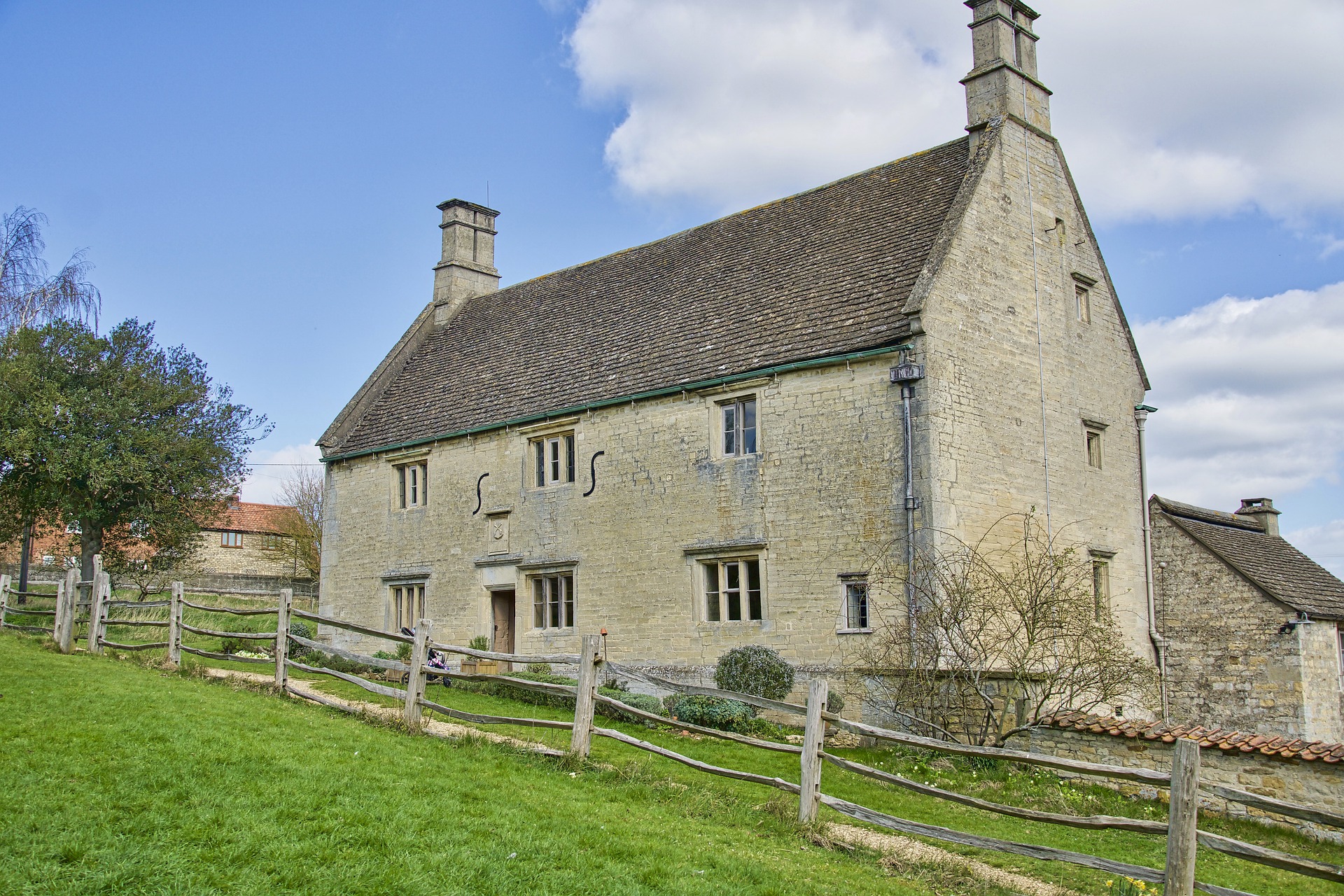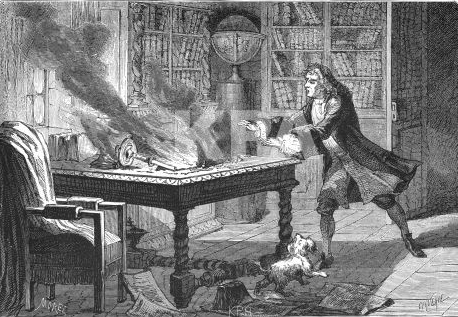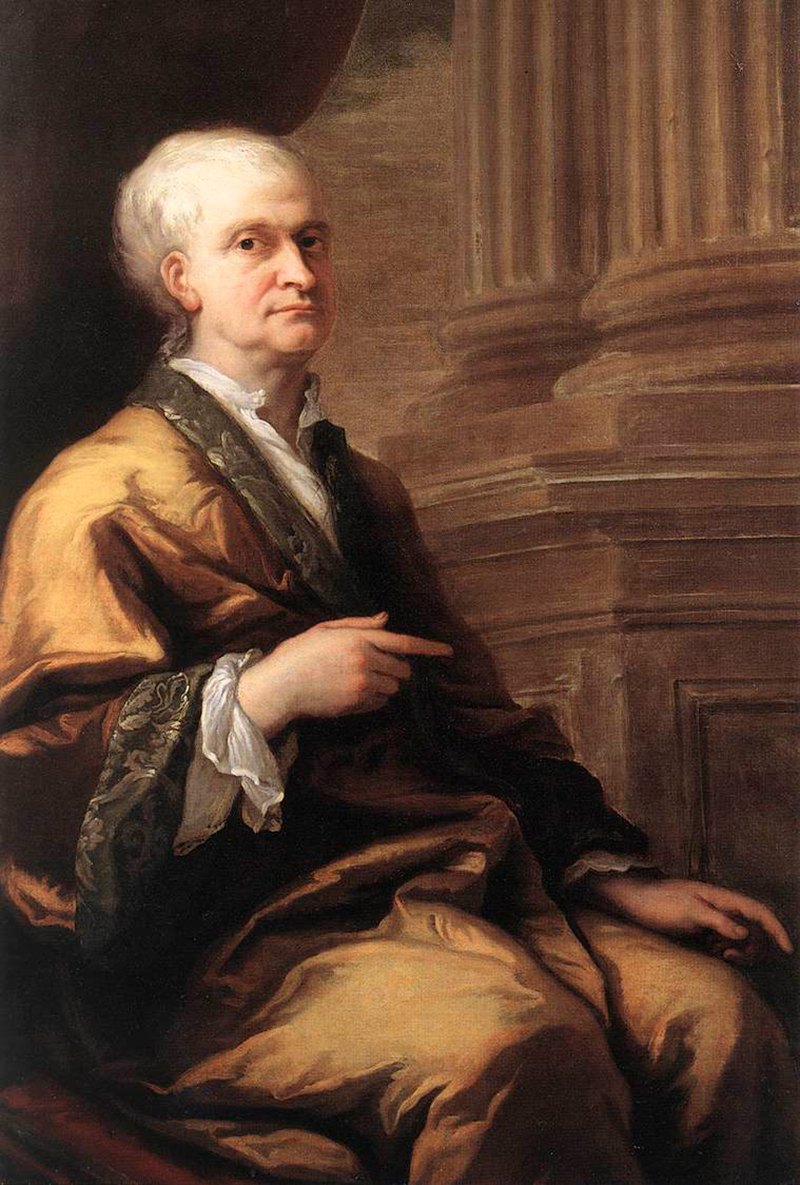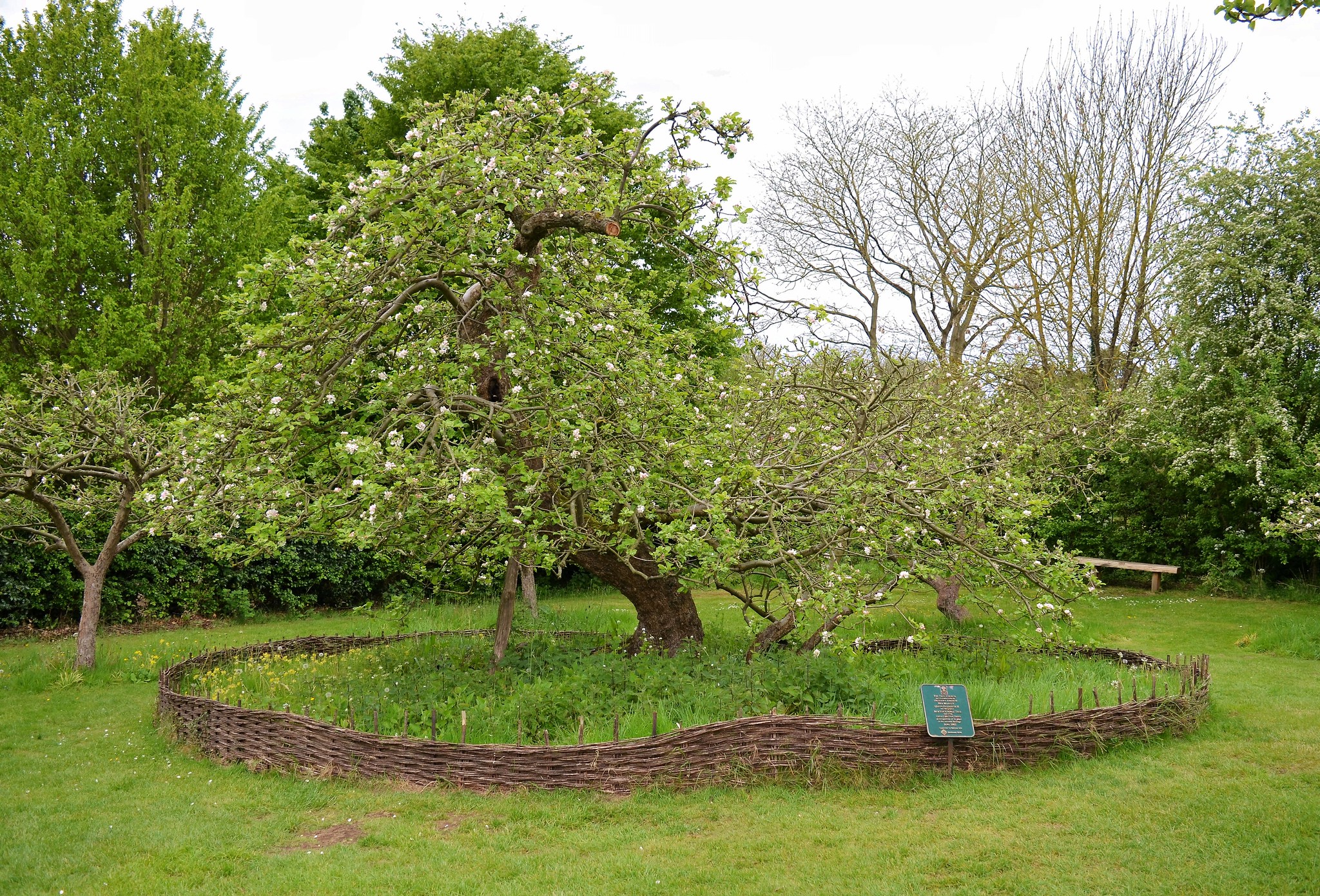
Sir Isaac Newton is one of the first names you’d hear about in your science and math classes. Born in in the midst of the Scientific Revolution, Newton himself grew up to have multiple significant discoveries and inventions. With his works on calculus, the laws of motion, and the famous law of universal gravitation, Newton also became one of the most influential people on Earth. Gravitate towards knowledge about one of the greatest minds of the 17th century with these amazing Isaac Newton facts.
- Isaac Newton invented the reflecting telescope in 1668.
- From the ages 12 to 17, Isaac Newton stayed with the apothecary William Clarke, which inspired his early interest in chemistry.
- His main work was the Philosophiæ Naturalis Principia Mathematica, which he published in 1687. This work consisted of three books.
- He lived up until 84 years of age and never married.
- His father died 3 months before his birth.
- Isaac Newton was born in Woolsthorpe-by-Colsterworth, England.
- Isaac Newton was a polymath who excelled in many subjects.
- His work laid the foundation of modern science.
- Isaac Newton formulated the three laws of motion.
- He grew up under the care of his maternal grandmother.
- He received his early education in The King’s School, Grantham in Lincolnshire.
- Isaac Newton later achieved his MA in Trinity College, Cambridge.
- He was, for the most part, an average student but excelled outside of school.
- Isaac Newton worked on Biblical chronology, but his works there mainly went unpublished.
- Newton’s method, a root-finding algorithm in numerical analysis, was named after Isaac Newton.
- Isaac Newton’s father also had the name Isaac Newton.
- His earliest known piece of writing is a Latin phrasebook.
- Isaac Newton’s signature can still be seen carved on the side hall of The King’s School, Grantham.
- In most accounts, Isaac Newton lived a reclusive and lonely life.
- He served as a president of the Royal Society, the oldest known scientific organization that still exists today.
An apple didn’t really fall on Newton's head.
One of the most famous stories about Isaac Newton is that he developed the law of universal gravitation after an apple fell on his head. While entertaining, this story is actually nothing but a myth. Although Newton himself often stated that he got his inspiration from observing an apple fall from a tree, the apple didn’t really fall on his head.
This tall tale likely emerged when his acquaintances first verified the story of him observing an apple. One memoir stated that Newton had a thought about gravitation when he saw an apple fall from the tree, asking why it always had to fall downwards and not in any other direction. He then postulated that the Earth could be pulling the apple due to Earth’s large amount of matter. Similarly, the apple also pulled on the Earth, but with much less force. From this hypothesis, Isaac Newton developed and published a theory of gravity in 1687, which encompassed all objects.
Newton also studied a lot about the occult.
One of the strangest Isaac Newton facts is that aside from his scientific endeavors, Isaac Newton also spent a lot of time in occult studies. In fact, he personally valued the occult wisdom of the ancients more than his work as a scientist. He wrote on subjects such as the Temple of Solomon, prophecies, and even Atlantis.
He was born on Christmas day, but January 4 is also his birthday.
At the time of Isaac Newton’s birth, England had not adopted the Gregorian calendar yet. According to the Julian calendar or “Old Style”, Newton was born on Christmas day, December 25th, 1642. When they began to adopt the Gregorian calendar that we now use, this pushed his day of birth to January 4th, 1643.
Isaac Newton almost didn’t survive as a baby.
As a baby, Newton was born premature, which made him small and sickly. In fact, he was so small that his mother even stated that he could fit into a quart mug. The young Isaac Newton wasn’t expected to survive his first day of life — and yet, he survived and lived up to the ripe old age of 84.
He greatly disliked his stepfather.
Isaac Newton’s wealthy yet uneducated father died only 3 months before he was born. When he was 3 years old, his mother, Hannah Ayscough, married Reverend Barnabus Smith. Smith, however, did not want to have a stepchild.
As a result, Newton’s mother left to live with her new husband, sending little Isaac to the care of his maternal grandmother, Margery Ayscough. Because of this, the young Newton greatly disliked his stepfather, eventually resenting his mother for marrying Smith.
He was a working student.
In June 1661, Isaac Newton got into the University of Cambridge at 18 years old. There, he had the role of a sizar, which meant he received financial assistance in exchange for doing specific jobs. In his work-study role, Newton also became a waiter and took care of the rooms of other students. Now, how’s that for inspiring Isaac Newton facts?
Isaac Newton got good grades in school to annoy his schoolyard bully.
While he was studying in King’s School, Grantham, he was bullied by another kid. The bully once kicked Newton in the stomach, but Newton challenged him to fight after class. When it came down to it, young Isaac Newton won the fight.
After this incident, Newton decided to mentally overpower his bully as well, so he worked hard to become the top-ranked student in the school. He even built sundials and models of windmills to distinguish himself.
He was starkly religious.
Although born into an Anglican family, Newton had views considered quite unorthodox in mainstream Christianity. In fact, one historian even described him as a heretic. Still, he put in a lot of work in theological research.
Privately, he rejected the notion of the Trinity and considered the worship of Christ and the Holy Spirit as idolatry. He also did a lot of research on the chronology of the Bible, placing a date on the death of Jesus Christ at April, 3rd 33 AD.
He made a list of his sins when he was 19.
Isaac Newton’s religious views started early in his life. When he was 19, he even made a list of 57 sins he’d made before and after Whitsunday of 1662. Some of these sins included making pies on a Sunday night, stealing plums and sugar from his mother’s box, punching his sister, and even threatening his mother and stepfather that he will burn the house over them. Certainly one of the strangest Isaac Newton facts.
ROYGBIV wouldn’t be complete without his penchant for the number 7.
There are supposedly 7 colors in the rainbow, which most of us remember by the mnemonic ROYGBIV: red, orange, yellow, green, blue, indigo, and violet. Sir Isaac Newton famously categorized the visible spectrum into 7 separate colors, but originally, there were 5. He only later added orange and indigo because he believed that the number 7 was sacred. After all, there were 7 days in a week, 7 musical notes, and 7 known planets at the time.
He did a lot of his work while staying at home during the Great Plague.
Isaac Newton got his BA degree in August of 1665. Shortly afterwards, the University of Cambridge closed down as a precaution against the Great Plague of London. During this time, Isaac Newton spent his time at home, devoting himself to his own research.
Despite being unremarkable as a student, his private research would later on set the foundation for infinitesimal calculus, optics, and the law of universal gravitation.

Isaac Newton also studied alchemy.
Newton took an interest in the natural sciences early in his life, first exposed to alchemical studies when he stayed with the apothecary William Clarke. From there, he conducted his own alchemical research and experiments, even stating that the main goal of his alchemy was to produce the philosopher’s stone.
The philosopher’s stone allegedly had the ability to turn metals into gold and perhaps even give a person eternal life. This was a particularly dangerous pursuit because alchemy during his time was illegal, punishable by hanging.
He thinks the world will not end before 2060.
Part of Isaac Newton’s occult studies is doing research about prophecies, including predictions about the end of the world. He was against setting a date on the end of the world, but there is a misconception that he made a prediction of the end times. He refuted the current predictions about the end times and stated that the world is unlikely to end before the year 2060. According to him, the end may come much later.
One of his famous works almost didn’t see the light of day because of a book about fish.
The Royal Society made the promise to fund the publishing of Newton’s main work, the Principia. However, prior to the publishing of the Principia, this scientific organization spent a huge amount of money on publishing the Historia Piscium, or History of Fishes. This work by John Ray and Francis Willughby had ornate illustrations of different kinds of fishes, but it largely flopped in the market, leading to The Royal Society not having enough funds for publishing Newton’s work.
Thankfully, Edmund Halley helped pay for the publication of Newton’s work, largely from his own pockets but also through raising funds. This highly influential work eventually made it into print in 1687.
He lost 20 years’ worth of research in a laboratory fire.
The extent of Sir Isaac Newton’s alchemical work remains obscure because he lost around 20 years’ worth of research when his laboratory burned down. In a popular legend, Isaac Newton’s favorite dog, Diamond, was to blame for the laboratory fire.
Newton reportedly exclaimed, “O Diamond, Diamond, thou little knowest the mischief thou hast done.” This story is largely dubious, however, and another account stated that a gust of wind simply knocked over a candle. Some historians even claim that Newton never had any pets.

He didn’t get along well with Robert Hooke.
One of the more interesting Isaac Newton facts is that he often bumped heads with other well-known scientists and mathematicians during his time. A well-documented rivalry of Newton is with Robert Hooke. After Isaac Newton published his work Opticks, Robert Hooke responded to some of his ideas with condescending criticism. This greatly offended Newton, and he withdrew from public debate.
When Sir Isaac Newton published Principia, where he explained the law of universal gravitation, Hooke asserted that he gave the idea to Newton in their correspondence. Newton denied this claim, however. He stated that Hooke only renewed his interest in astronomy but did not give him any new ideas.
Some historians say that Isaac Newton’s quote, “If I have seen further it is by standing on the shoulders of giants,” is a subtle insult to Robert Hooke’s height. Hooke reportedly had a hunched back and was the shorter among the two men. Other historians, however, say that this was merely a statement of modesty rather than an insult. Regardless, most accounts state that these two great minds clashed a lot, and remained in poor terms until Hooke’s death in 1703.
Isaac Newton developed calculus along with Gottfried Leibniz.
While you may think otherwise, the credit for developing calculus does not solely go to Sir Isaac Newton. Another mathematician, Gottfried Wilhelm Leibniz, had a known dispute with Newton over who originally worked on and invented calculus.
Newton developed his concept of differentials (which he termed “fluxions”) in the mid-1660s but his works went unpublished for some time. However, Gottfried Leibniz developed his own theories and had them published in 1684. The modern consensus now is that both of these great mathematicians developed their own theories independent of each other.
Isaac Newton also served in Parliament but contributed very little.
Among the more interesting Isaac Newton facts is that he worked briefly as a politician. When Isaac Newton was in his late 40s from 1689 to 1690, he briefly became a member of the Parliament as a representative of Cambridge University. While the Bill of Rights came to fruition during this period, most accounts point out that Newton wasn’t a significant contributor during his time as a politician.
He apparently spoke only one time — and this was just him asking an usher to close a window because it was cold. Due to his influence, Newton served in Parliament for a second term from 1701 to 1702. However, he still did not seem to have any significant contributions.
He was a fan of portraits.
Despite Sir Isaac Newton’s chronic loneliness and solitary lifestyle, he had his portrait painted a lot. Especially at the latter portion of his life, he had more than a dozen paintings of himself commissioned.
At that time, these portraits were of high value, with historian Mordechai Feingold stating that only monarchs a few noblemen had their portraits done more times than Newton. Certainly one of the lesser-known Isaac Newton facts, but it’s interesting nonetheless.

Queen Anne knighted him in 1705.
In a visit to Trinity College, Cambridge in 1705, Queen Anne knighted Sir Isaac Newton. Although some believe that the knighthood is because of his scientific work, it was more likely that it was due to political considerations. After Francis Bacon, Isaac Newton is the second scientist to ever receive a knighthood.
He suffered from nervous breakdowns.
Even the greatest minds suffer from mental health problems. After his dispute with Robert Hooke over optics in 1678, Isaac Newton suffered from a nervous breakdown. He had another one in 1693, which he attributed to his lack of sleep. Shortly afterwards, he retired from scientific research.
Some researchers suggest that his nervous breakdown could be a result of mercury poisoning due to his alchemical research, but others attributed it to chronic depression.
Isaac Newton stuck a blunt needle in his eye socket in one of his experiments on optics.
Newton is famous for his works on optics and studying the properties of light. He did numerous experiments regarding optics, using prisms in his private studies. However, one of the most surprising Isaac Newton facts is that he also performed experiments on himself.
Perhaps grotesquely, Newton stuck a needle with a blunt end in between his eye and his skull bone. By doing this, he aimed to alter the interior curvature of his eye and observe the resulting visual distortions.
He was not a great investor.
Although Isaac Newton was indeed a brilliant scientist, he wasn’t a particularly good investor. Isaac Newton owned shares in the South Sea Company, from which he profited well in its early days, around the 1710s. After sensing that the market was getting out of hand, he pocketed £7,000 worth of investments. Since stocks kept rising, he invested again at a much higher price. Months later, the stocks plummeted, causing Newton to lose most of his money.
In this famous South Sea Bubble, Isaac Newton apparently lost around £20,000, which is worth millions of dollars in today’s money. In exasperation, the brilliant scientist exclaimed that he could “calculate the motions of the heavenly bodies, but not the madness of people.”
His mother originally wanted him to be a farmer.
When Isaac Newton was around 15 or 16, his mother was widowed for a second time. She ordered him to stop going to school and become a farmer instead. As expected, he apparently disliked farming and fared poorly at the job.
Eventually, Henry Stokes, then headmaster at the King’s School, persuaded Isaac Newton’s mother to allow him to return to school and complete his education. Stokes’ persuasion proved successful, and Isaac Newton consequently returned to school and completed his education at the age of 18.
In 2010, a British astronaut brought a piece of Newton’s apple tree to outer space.
A British astronaut from NASA named Piers Sellers once asked the Royal Society to let him bring a piece of Newton’s iconic apple tree to the International Space Station. He did so in 2010, bringing a picture of Isaac Newton to float in microgravity alongside a piece of wood from the old apple tree that inspired his scientific work.
Piers Sellers did this as a tribute to Newton’s work on the law of universal gravitation, which heavily contributed to the possibility of spaceflight.
The apple tree that inspired his work on gravitation is still alive.
Newton’s fabled apple tree still stands strong to this day and resides near Isaac Newton’s childhood home in the Woolsthorpe Manor. The tree receives great care so that it stays healthy and can continue to produce apples.

Isaac Newton worked as a warden of the Royal Mint.
From 1696 to 1699, Sir Isaac Newton worked as a Warden of the Royal Mint. The Royal Mint produced the currency of England. He then received a promotion and worked as Master of the Royal Mint in 1699, which he fulfilled until 1727.
His work at the Mint involved replacing old coins with more reliable ones, as well as tracking down counterfeiters. Some of the criminals he investigated received charges of high treason, receiving the punishment of death.
Isaac Newton taught as a professor at Cambridge.
In 1669, the 26-year-old Isaac Newton got a job as a Lucasian professor of mathematics at Cambridge. According to some researchers, however, he didn’t care much about his students. One of the most puzzling Isaac Newton facts is that most of his students didn’t show up to his lectures at all!
Isaac Newton died in his sleep.
The brilliant scientist reached the end of his life in 1727. Isaac Newton died in his sleep. Upon examining his hair, researchers found that his hair contained traces of mercury and led to the notion that mercury poisoning played a part in his nervous breakdown or his death. He never experienced the typical symptoms of mercury poisoning, however, such as balding and bleeding gums.
Newton died a famous and rich man, with his body lay to rest in Westminster Abbey. Other great scientists were later buried near Newton’s grave, such as Charles Darwin and Stephen Hawking.
Isaac Newton appears as a character in Marvel’s main universe.
One of the most interesting Isaac Newton facts is that he appears as a character in Marvel’s main universe, where he had the superpowers of super intelligence, flight, energy manipulation, and even summoning mystical creatures. He also was nearly immortal because he used the Elixir of Life. Furthermore, he also became a Sorcerer Supreme like Doctor Strange.
Was this page helpful?
Our commitment to delivering trustworthy and engaging content is at the heart of what we do. Each fact on our site is contributed by real users like you, bringing a wealth of diverse insights and information. To ensure the highest standards of accuracy and reliability, our dedicated editors meticulously review each submission. This process guarantees that the facts we share are not only fascinating but also credible. Trust in our commitment to quality and authenticity as you explore and learn with us.
